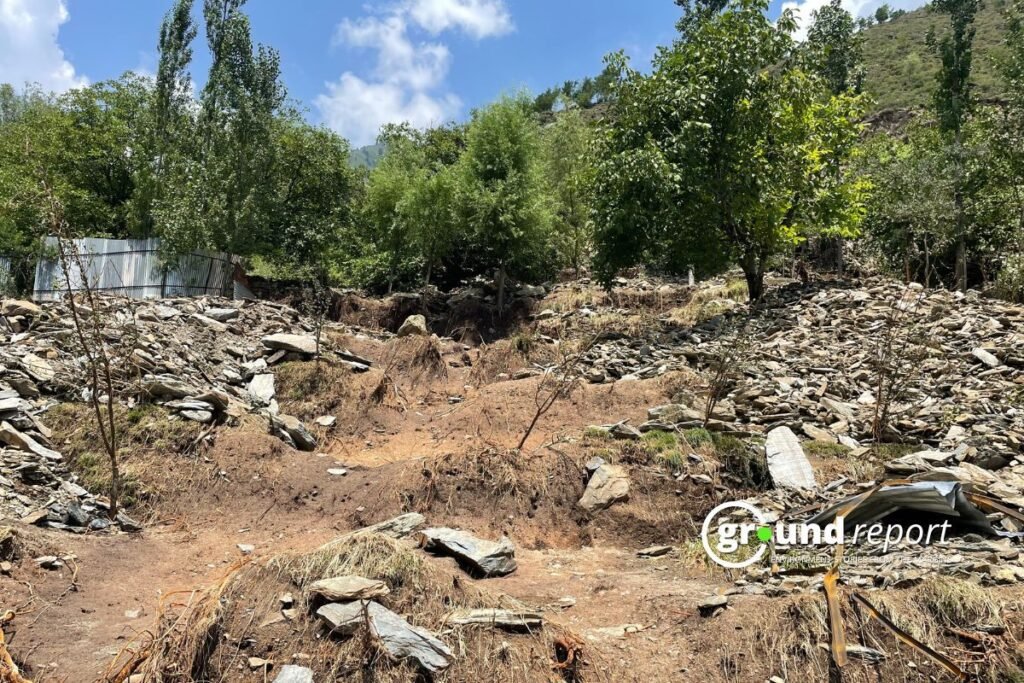Union Agriculture Minister Shivraj Singh Chouhan told the Lok Sabha that hailstorms, heavy rain, and floods have damaged over 1.58 lakh hectares of farmland across 13 states during the ongoing monsoon season.
The minister said the affected crops include paddy, wheat, barley, mustard, jowar, bajra, maize, onion, and various horticulture produce. “The total cropped area affected stands at 158,651.077 hectares,” Chouhan stated.
Maharashtra reported the highest crop damage, with 91,429 hectares affected. Assam followed with 35,024 hectares, and Karnataka with 18,093 hectares.
Over 1.58 Lakh Hectares of Crops Damaged
| S.No. | State/UT | Affected Crop Area (in hectares) |
|---|---|---|
| 1 | Arunachal Pradesh | 1,706.667 |
| 2 | Assam | 35,024.000 |
| 3 | Karnataka | 18,093.000 |
| 4 | Maharashtra | 91,429.000 |
| 5 | Manipur | 439.776 |
| 6 | Meghalaya | 6,372.302 |
| 7 | Nagaland | 11.000 |
| 8 | Odisha | 753.000 |
| 9 | Sikkim | 5.662 |
| 10 | Jammu & Kashmir | 1,239.090 |
| 11 | Dadra & Nagar Haveli and Daman & Diu | Nil |
| 12 | Uttarakhand | 8.468 |
| 13 | Punjab | 3,569.11236 |
| Total | 1,58,651.077 |
Responding to questions from MPs Sandipanrao Bhumare and Sudheer Gupta, the minister explained that the primary responsibility for assessing damage and providing relief lies with the state governments. Under the National Disaster Management Plan, the Centre provides financial and logistical support where needed.
“The financial assistance provided under the State Disaster Response Fund (SDRF) and National Disaster Response Fund (NDRF) is meant for relief and not compensation,” the report mentions. In cases of severe natural disasters, an Inter-Ministerial Central Team assesses the situation before additional funds are released from the NDRF.
Restructured Weather Based Crop Insurance Scheme
| S.No | State/UT | Farmer Applications Insured (lakh) | Area Insured (lakh ha) | Paid Claims – Farmer Applications (lakh) | Total Amount Paid (Rs. crore) |
|---|---|---|---|---|---|
| 1 | A & N Islands | 0.0 | 0.0 | 0.3 | 0.0 |
| 2 | Andhra Pradesh | 435.7 | 194.7 | 5,395.8 | 66.1 |
| 3 | Assam | 62.9 | 37.4 | 650.3 | 9.9 |
| 4 | Bihar | 52.3 | 48.3 | 811.1 | 4.7 |
| 5 | Chhattisgarh | 435.4 | 212.1 | 7,498.6 | 111.5 |
| 6 | Goa | 0.0 | 0.0 | 0.1 | 0.0 |
| 7 | Gujarat | 83.9 | 112.3 | 5,613.3 | 29.3 |
| 8 | Haryana | 388.3 | 151.9 | 8,907.4 | 76.5 |
| 9 | Himachal Pradesh | 26.2 | 342.6 | 595.5 | 11.3 |
| 10 | Jammu & Kashmir | 9.5 | 5.5 | 153.9 | 2.7 |
| 11 | Jharkhand | 71.7 | 33.2 | 857.3 | 9.0 |
| 12 | Karnataka | 223.6 | 190.9 | 16,982.7 | 122.9 |
| 13 | Kerala | 9.6 | 5.0 | 629.9 | 4.9 |
| 14 | Madhya Pradesh | 1,013.7 | 1,001.0 | 30,248.5 | 305.4 |
| 15 | Maharashtra | 1,306.7 | 796.7 | 43,339.5 | 618.0 |
| 16 | Manipur | 0.4 | 0.4 | 8.8 | 0.2 |
| 17 | Meghalaya | 0.9 | 0.3 | 24.1 | 0.3 |
| 18 | Odisha | 654.7 | 124.3 | 7,141.5 | 111.9 |
| 19 | Puducherry | 1.9 | 0.7 | 16.5 | 0.4 |
| 20 | Rajasthan | 1,941.5 | 914.3 | 29,034.8 | 486.2 |
| 21 | Sikkim | 0.1 | 0.0 | 0.2 | 0.0 |
| 22 | Tamil Nadu | 381.1 | 129.4 | 15,235.3 | 174.4 |
| 23 | Telangana | 39.0 | 40.1 | 1,906.4 | 12.2 |
| 24 | Tripura | 14.0 | 2.6 | 12.2 | 1.3 |
| 25 | Uttar Pradesh | 529.3 | 337.6 | 5,718.6 | 92.9 |
| 26 | Uttarakhand | 20.0 | 232.3 | 1,208.4 | 10.0 |
| 27 | West Bengal | 138.2 | 57.9 | 1,268.0 | 19.5 |
| Total | 7,840.7 | 4,971.9 | 1,83,258.9 | 2,281.5 |
In Uttarakhand, 4,774.65 hectares of crop loss were recorded, with Rs. 699.72 lakh disbursed through the SDRF. Odisha provided Rs. 15.39 crore in relief to affected farmers using the same fund.
The government also shared data on payouts under the Pradhan Mantri Fasal Bima Yojana (PMFBY) and the Weather-Based Crop Insurance Scheme. Maharashtra topped the list with Rs. 618 crore paid to 13.06 lakh farmers. Madhya Pradesh followed with Rs. 305.4 crore paid to 10.13 lakh farmers, and Rajasthan with Rs. 486.2 crore disbursed to 19.41 lakh insured farmers.
What’s Next for Affected Farmers?
The report raises critical questions about how prepared state systems are to handle such weather-related disruptions. As extreme weather becomes more common, the speed and effectiveness of relief and insurance payments remain under close watch.
Support us to keep independent environmental journalism alive in India.
Keep Reading
Indore Startup Swaaha takes the lead in making Amarnath Yatra eco-friendly
Amarnath Yatra: Tackling rising death toll from extreme weather events
Amarnath yatra pilgrims urinating in Sindh river: A threat to environment
Stay connected with Ground Report for underreported environmental stories.
Follow us on X, Instagram, and Facebook; share your thoughts at greport2018@gmail.com; subscribe to our weekly newsletter for deep dives from the margins; join our WhatsApp community for real-time updates; and catch our video reports on YouTube.
Your support amplifies voices too often overlooked—thank you for being part of the movement.

